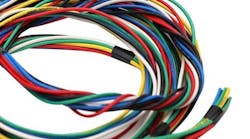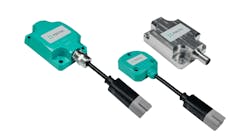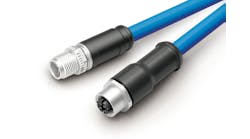Six experts give tips for how to keep cables labeled and easy to identify. As the Industrial Internet of Things (IIoT) continues to gain mindshare and acceptance, the roles of the cables, connectors and wires that move the data become more important.
Any suggestions on maintenance strategies for cable identification by technicians?
Scott Byrne, senior manager, power, instrumentation & controls, at Matrix Technologies, a Control System Integrators Association (CSIA) member: The wire labels should be chosen and applied so that they are readable with nonfading ink, positioned where you can read them without the need to twist the wire. There are infinite ways to name wires and cables. One should consider a standardized code that identifies both ends of the wire or cable, as well as a reference to the wiring schematic. This can be difficult when considering the number of characters a wire label is limited to. But, when done properly, this is highly efficient for troubleshooting purposes. One suggestion would be to name the multi-conductor cable using a from-to scheme and name each individual wire with references to the wiring schematic.
Jack Zurick, senior control systems engineer at Thermo Systems, a Control System Integrators Association (CSIA) member: Thermo Systems will typically identify cables based on tag of the instrument or signal as has been identified on a piping and instrument diagram. In order to differentiate an instrument’s signal cable from a power cable which may be providing power to the instrument, we will often use suffixes to the tag such as “S” for signal or “P” for power.
Craig Fox, connectivity product manager at Murrelektronik: We include label holders near the connector head of cable assemblies and built into the connection points of I/O devices. By utilizing these built-in features, a customer can easily identify the location and type of signal being connected. Label plates can easily be printed by laser marking, inkjet or even by hand, depending on your desired level of integration.
Allen Bennett, field application engineer at Allied Electronics & Automation: Ensure the cable wires are numbered and have the specific wire color on each end. If possible the technician can ring out the cable wires by checking continuity. Most importantly, they need to be labeled.
Alex Dzatko, proposals specialist at Pepperl+Fuchs: Tags can be fixed around the insulation jacket. For point-to-point wire identification, heat-shrink wire tags are often used. Cables and wires can also be easily identified by their colors. Light blue is often used for intrinsically safe signals, and green or green/yellow is often used for ground connections.
Jennifer Grace, product technical manager—connectivity at Balluff: In some automation installations, grouping of cables for different areas of responsibility and using different color jackets to identify may prove to be a viable strategy. These color-coded groupings improve troubleshooting with well-identified, structured connections, and that helps to reduce risks during installation and far into the future because personnel will be able to clearly understand where various cables should connect and the purpose of these cables.
An example would be to use blue-color Ethernet cable between two controllers; teal-color Ethernet cables for fieldbus/network communication between control devices on a machine; and red-color jacketed cables for safety communication.
ALSO READ: Don't let poor wire and cable decisions slow down your next project
About the author: Mike Bacidore












